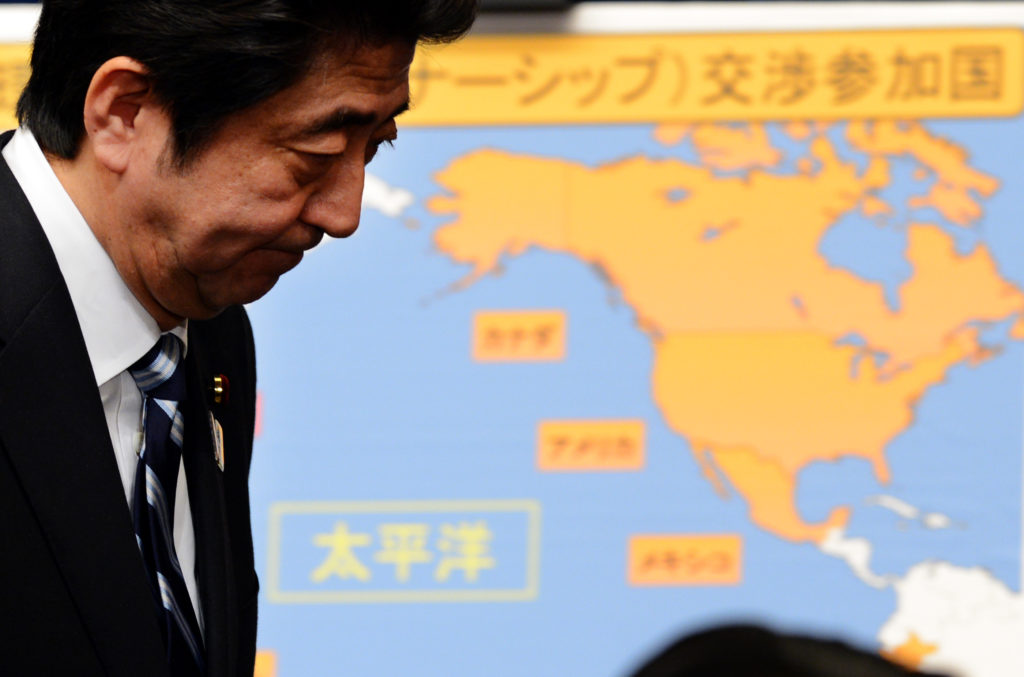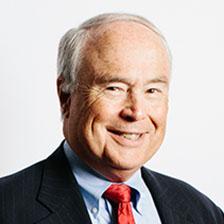I saw that you could not separate the idea of commerce from the idea of war and peace.
Cordell Hull, Former Secretary of State (1933-1944)
Three days after taking office, President Trump withdrew the United States from the Trans-Pacific Partnership (TPP), fulfilling a core campaign promise.
During the 2016 presidential race, voters in swing states had flocked to Donald Trump’s “America First” rhetoric, which promised to shift the country’s economic and political focus away from global supply chains back to the industrial heartland. Bernie Sanders and eventually Hillary Clinton would also come out against the TPP as the promise to protect American jobs resonated among voters in the Midwest, the Rustbelt, and Appalachia.
By the time of the general election, the TPP had no champion.
Months later, with one stroke of the pen, newly-inaugurated President Trump terminated a 15-year effort to reshape trade in the Asia-Pacific region.

For former Assistant U.S. Trade Representative Barbara Weisel, the chief American negotiator who invested countless hours negotiating the TPP, this meant ending a carefully managed relationship with other countries.
“We left them at the altar,” Weisel said.
The United States has not let up since, slapping tariffs on allies like Canada and waging a trade war with China. The United States’ abandonment of the TPP marked the beginning of a seismic shift in American foreign policy. It has reverberated beyond trade and threatens to erode longstanding relationships. The decision to withdraw threatens to undermine America’s post-WWII leadership of the international economic order and the security it provides.
The TPP in Context
The TPP was a mega-regional free trade agreement forged by the Obama administration that tied together 12 Asia-Pacific economies, accounting for 37 percent of the world’s GDP. It created common rules to govern global value chains, which would have benefitted American consumers and multinational companies.
Today, companies rely on global supply chains—networks where different stages of production for goods occur in different countries. When the World Trade Organization (WTO) and its predecessor, the General Agreement on Tariffs and Trade (GATT) were established, supply chains were usually national in scope and scale. As a result, the WTO and GATT largely focused on reducing and regulating tariffs as they constituted the greatest obstacles to world trade.
As supply chains have globalized, governments discovered a need for common rules to govern provisions beyond tariffs like intellectual property. Yet, those wanting to pursue deeper economic integration found it impossible to forge consensus among the 150-plus members of the WTO. As a result, many countries began negotiations outside the WTO framework.
The U.S. response was to negotiate bilateral free trade agreements in East Asia during the early 2000s. However, it found the pace of these talks so slow that the United States was at a disadvantage in the dynamic Asia-Pacific region.
According to Weisel, American policymakers began “looking around for some kind of mechanism to accelerate our engagement in the region.”
After looking closely at the details of the emerging TPP, the United States concluded that the framework with modification could provide a basis upon which to build deeper economic integration in the Asia-Pacific.
The TPP had expanded the protection of American interests with its chapters on intellectual property, investment protection, and labor, among others. The intellectual property chapter included rules that protected the copyright of films, music, digital media, and patents on pharmaceutical products. The investment chapter strengthened investor-state dispute settlement arrangements, which would have protected American companies seeking to invest in emerging economies like Malaysia.
Notably, the labor rights chapter referenced principles from the International Labor Organization (ILO) and borrowed heavily from labor provisions from prior American free-trade agreements. The Obama administration was adamant that other countries adopt stronger labor standards in exchange for access to U.S. markets. Where the United States saw especially low standards, as it did in Vietnam, Brunei, and Malaysia, it negotiated bilateral Labor Consistency Plans in parallel with the TPP. These Plans mandated additional reforms to be implemented prior to American ratification.
In 2015, eight former defense secretaries wrote to Congress expressing their support for the TPP. Then-Secretary of Defense Ashton Carter was an emphatic supporter.
“Passing TPP is as important to me as another aircraft carrier,” he wrote.
Ted Alden, an expert on U.S. economic competitiveness at the Council on Foreign Relations helps place Carter’s support in context. A rules-based trade system like the TPP encourages governments to embrace liberal norms. The resulting economic interdependence in turn promotes prosperity and peace.
“Economics and security are indistinguishable” in the region, he concluded.
However, segments of the American public remained unconvinced.
Labor unions were among the most vocal opponents of the TPP. AFL-CIO President Richard Trumka expressed his opposition early on in a 2015 interview with PBS News Hour.
The TPP will “hurt everybody in the economy,” Trumka said. “It doesn’t just hurt industrial workers. It hurts professional workers. It hurts teachers. It hurts public workers by doing away with the tax base.”
Consumer groups also criticized the deal. The Consumers Union and the Consumer Federation of American argued in a September 2016 letter to Congress that the TPP, “risk[s] undermining important safety, health, and other interests of consumers.” Environmental groups also expressed opposition, arguing that the TPP threatened “our air, water, and climate.”
Voters were also sharply divided. A poll conducted by the Pew Research Center in late 2016 found that 68 percent of Trump supporters opposed free trade agreements in general, while 58 percent opposed the TPP. By contrast, 55 percent of Hillary Clinton supporters favored the TPP. Trump’s campaign seized on this division by promising to leave the agreement if elected.
Withdrawal and Fallout
In the short-term, Trump’s decision to exit from the TPP means that potential new markets for investment remain closed, and patents remain less protected. In the long-term, it could diminish other countries’ willingness to negotiate with the United States because they can’t trust American leaders to stick to deals.
“The steps the United States is taking in withdrawing from the TPP [are] risking unraveling the trading system,” said trade expert Scott Miller at the Center for Strategic and International Studies (CSIS) in Washington. He added that America’s retreat from global economic leadership leaves the job of creating and maintaining the rules of the game to someone else.
Trade negotiator Weisel echoed Miller’s sentiment.
“Globalization,” said Weisel, “will go on without us.”
Indeed, it already is. In March 2018, America’s eleven former partners signed what was renamed the Comprehensive and Progressive Agreement for Trans-Pacific Partnership (CPTPP). These countries retained the market access provisions embodied in the original TPP, leaving most of the text unchanged.
However, the CPTPP suspended items central to American interests, including provisions on intellectual property rights and investment protection. It also tabled the Labor Consistency Plans.
Perhaps the most salient difference between the TPP and the CPTPP is that the latter does not push the frontier in setting standards. In short, it leaves unresolved issues critical to American corporations’ participation in global supply chains.
As Matthew P. Goodman, the William E. Simon Chair in Political Economy at CSIS noted, the WTO alone doesn’t “meet the current challenges of a supply chain-based global economy.”
In April tweets, President Trump suggested the United States may rejoin the agreement if a new deal “were substantially better than the deal offered to Pres. Obama.” The statement surprised most observers, including his trade advisers, and was reversed two days later. Although administration policy has not changed, the episode raises the question if the United States could rejoin the TPP if it wants to do so.
“If the United States wants to rejoin, we’ll find a way,” argued Scott Miller of CSIS. Access to the U.S. market remains a valuable bargaining tool, but major obstacles to American reentry exist. International support for U.S. membership remains high, but domestic political opposition compounded by congressionally-imposed legal hurdlescomplicate U.S. reentry.
Should the United States stay outside the TPP, the trajectory for the rules-based international order remains uncertain.
Brian Harding, deputy director and fellow of the Southeast Asia Program at CSIS, claims that others will write the rules of the global economy should the United States remain reluctant to re-engage with the TPP framework.
The future and the history of the 21st century is being written in Asia, economics are fundamental to the international relations of Asia, and we are absolutely absent from that arena.
“Failure to stay in the TPP has been very damaging for U.S. global leadership,” Harding said. “The future and the history of the 21st century is being written in Asia. Economics are fundamental to the international relations of Asia, and we are absolutely absent from that arena.”
Two countries might be positioned to assert leadership in the region: China and Japan. However, both face obstacles. While China may see U.S. withdrawal as an opportunity, it does not currently possess the soft power needed to assume global responsibilities. And despite Japan’s unexpected leadership role in CPTPP negotiations, it has typically shown itself to be a reluctant power. Moreover, none of the other countries in the region are eager to see either China or Japan become a regional hegemon.
The Future
Since withdrawing from the TPP, the United States has introduced steel and aluminum tariffs that hit heavily on Canada, Mexico, and the European Union. Trump’s protectionism led to a confrontational G7 meeting in June 2018 where President Trump called Canadian Prime Minister Justin Trudeau “dishonest and weak” and repeatedly highlighted the unfairness of Canada’s tariffs on dairy products. Ironically, the TPP would have reduced these same dairy barriers.
Just a few days after clashing with the G7, President Trump travelled to Singapore to meet North Korean leader Kim Jong Un. After the summit, the leaders signed a document promising “new relations” between Washington and Pyongyang, suggesting that the United States recognizes a continuing interest in East Asia. However, untethered from economic leadership, U.S. involvement in the region risks taking on a narrow focus on the military dimension of regional security.
Ongoing NAFTA negotiations will more thoroughly test “AmericaFirst” trade strategies, as will the unfolding trade war with China. Results from these interactions will reveal whether the United States can maintain world leadership with short-sighted protectionist policies. In this context, withdrawal from the TPP is not just about trade politics; it’s about the future of the U.S.-centered international order.















